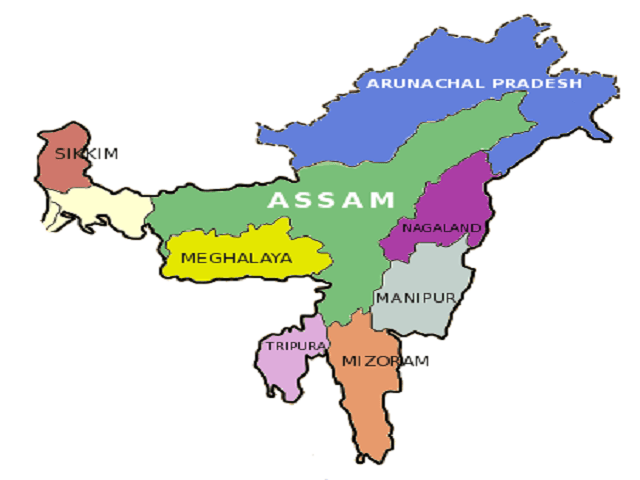
India is said to have 28 states (as of now), but if we start taking a look at the history of how these states particularly came into existence., we don’t get that much data in our textbooks. The situation becomes even worse when it comes to the North East. Seldom do we get to study the history of the North East, its culture, its lifestyle. There is a total of 8 states, with the 7 (except Sikkim) being called the Seven Sisters. So, today we would dig deeper into the history of these north-eastern states and how did they become a part of India. Also, let me tell you there will be some ‘untold’ and ‘unheard’ stories, which have not been allowed to come out that openly. If you are surprised, then tighten your seatbelts…..
It was only Assam initially
At the time of independence, out of today’s 7, only one was a state…Assam. Other than this, there was just one union territory named North East Frontier Agency (NEFA) which came under the jurisdiction of the Assam governor only. Actually, right after the First Anglo-Burmese War (1824-26), Britishers took the major parts of the North East under their control. So, as we see Assam was a separate state right from the beginning and the controversy was not about identity but that of population composition.
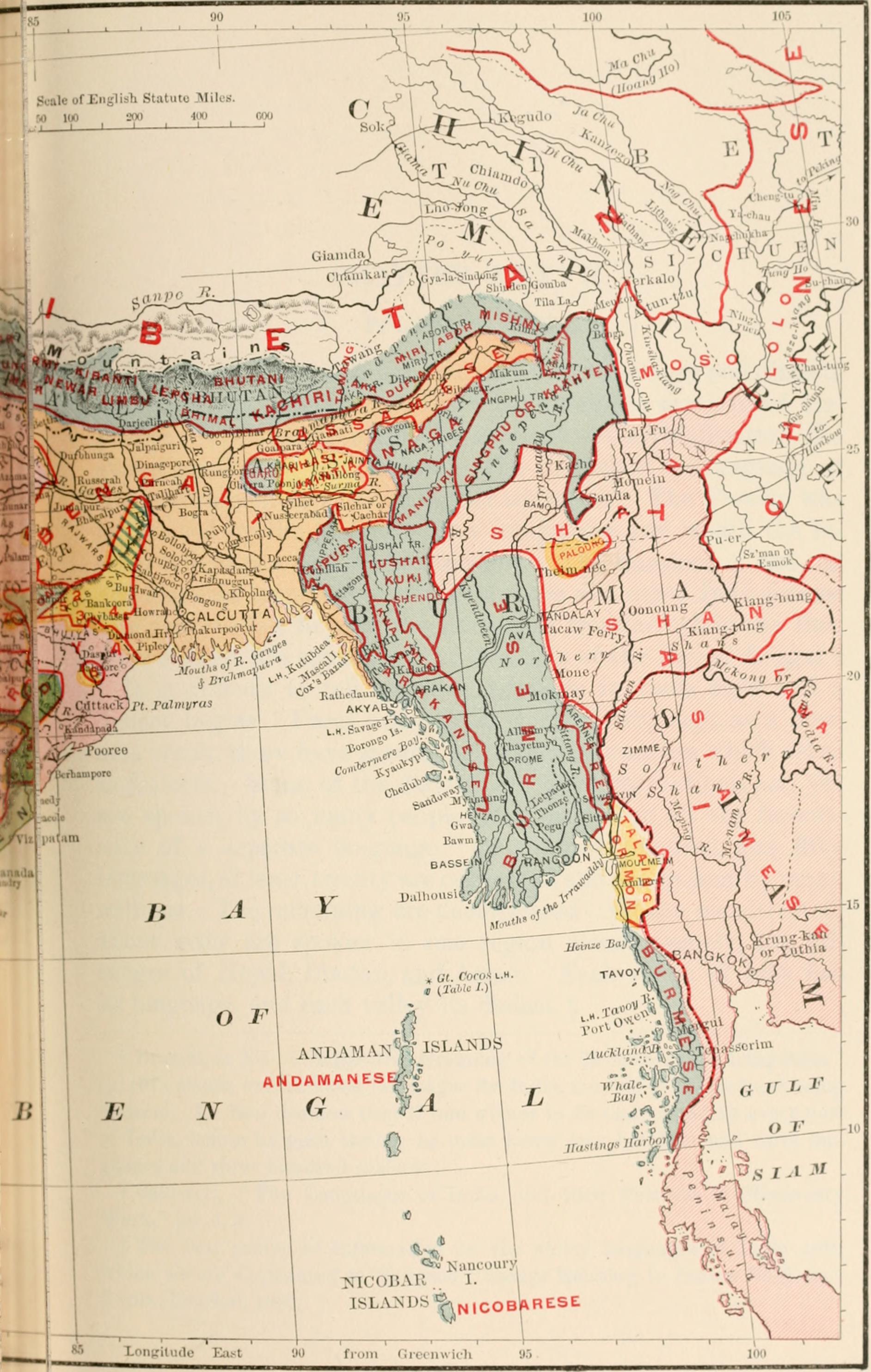
The terror of AASU, ULFA and the seed of NRC
Now, right from 1979, the All Assam Students Union (AASU) started protesting against the Bangladeshi immigrants in the state. The protests turned serious and violent and they even boycotted the 1983 state elections. Due to all this, the then PM Rajiv Gandhi had discussions with them and signed the 1985 Assam Accord, which paved the way for NRC (National Register of Citizens) as well. According to this, the immigrants who came to Assam before 1st Jan 1966 were citizens of Assam, those who came after the date but before 25th March 1971 were ‘Partial’ citizens (can’t vote for 10 years) and anyone who came after this was not a citizen and were to be deported.
With time a group with the name United Liberation Front of Assam (ULFA) came up with the demand of an independent Assam with a socialist government. This organization went ahead and collaborated with NSCN and other Naxalite outfits. They started using Bhutan for carrying out attacks in India. Initially, Bhutan allowed this to happen but in 2003 India pressurized Bhutan and instead collaborated with it to crush down ULFA once and for all both through talks as well as attacks. There were leaders like Arabinda Rajkhowa who performed the talks and also there were leaders like Paresh Barua who made a separate ULFA faction and is still fighting for his dream of independent Assam, but his strength is extremely less now.
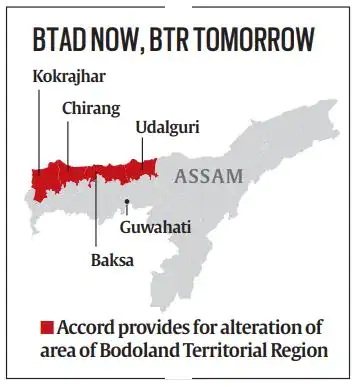
Recede of Violence amidst the BODO Demand
But, that was not the end of the insurgency in Assam as the National Democratic Front of Bodoland (NDFB) came up with their demand of a separate country in the name of Bodoland. Here, Bodoland is the area near the Brahmaputra river covering districts Kokrajhar, Chirang, Baksa and Udalguri. But the point is that the Bodos comprise some 10% of the total population of Assam and less than 50% even in this demanded Bodo region. So, there was absolutely no point in a separate state. Since their concern was development, hence the Indian government provided them with some autonomy with Bodoland Territorial Council in 1990.
Here, other than the border clashes, the inner violence between Bodos and the Bengali speaking Muslims from Bangladesh has also been quite prominent. In one of the many violent clashes in 2012, some 4 lakh Bengali Muslims were displaced from their houses by the locals. Still, the condition at present is very much under control there. Except for an NDFB faction (NDFB-S) led by IK Songbijit, every militant outfit has left violence. Also, because of that only do we see so much development and progress taking place in Assam right now.
Easy Situation of MANIPUR and TRIPURA
While Manipur was never a case of many conflicts, there were some slight issues with Tripura. Actually, Tripura was a princely state earlier that was under British control. But during independence, at the time of partition, a large influx of Hindus from Bangladesh into Tripura took place. It led to tensions and conflict among the Hindu migrants and the local tribals there in the name of land, resources and population. There have been a few organizations, most prominent being the National Liberation Front of Tripura (NLFT), which have been demanding an independent Tripura with full autonomy. But, so far the situation has been kept under control through discussions.

The Curious Case of ARUNACHAL PRADESH
Arunachal Pradesh became a state in 1987 from NEFA and it is one of the most curious cases. The reason is it doesn’t have any specific insurgency of its own, but it suffers due to the insurgencies in the adjoining states. The ULFA-I and the two NSCN (K and IM) that we talked about, use this region only for their violent purposes. Not just do they carry out attacks but also use it as a hiding place. Also, there are still some tensions in the state because of tribal communities that came from Bangladesh. Because of this region being ‘scarcely’ populated, the Indian government brought the migrants in this region.
MIZORAM and the Border Conflict
Now, we come onto MIZORAM which was a part of Assam under the name of ‘Lushai Hills’ during the British rule. But, its history dates back to colonial times. Britishers took the ‘Cachar Valley’ under their control. They started expanding their profitable venture ‘Tea’ rapidly, which lead to obstruction of farming and hunting of the local Mizos. This led to violent clashes between the local Mizos and the Britishers. The latter used force to permanently crush down all the uprising. They even made an Inner Line Regulation in 1875, which meant the need for a permit by anyone who crosses that line. Then in 1933, a proper border was defined which divided the Cachar valley and today’s Mizoram and Manipur. When Mizoram received statehood in 1987, both Assam and Mizoram accepted the Status Quo (then-current status) and also accepted a ‘No Man’s Land’ between Assam and Mizoram border.
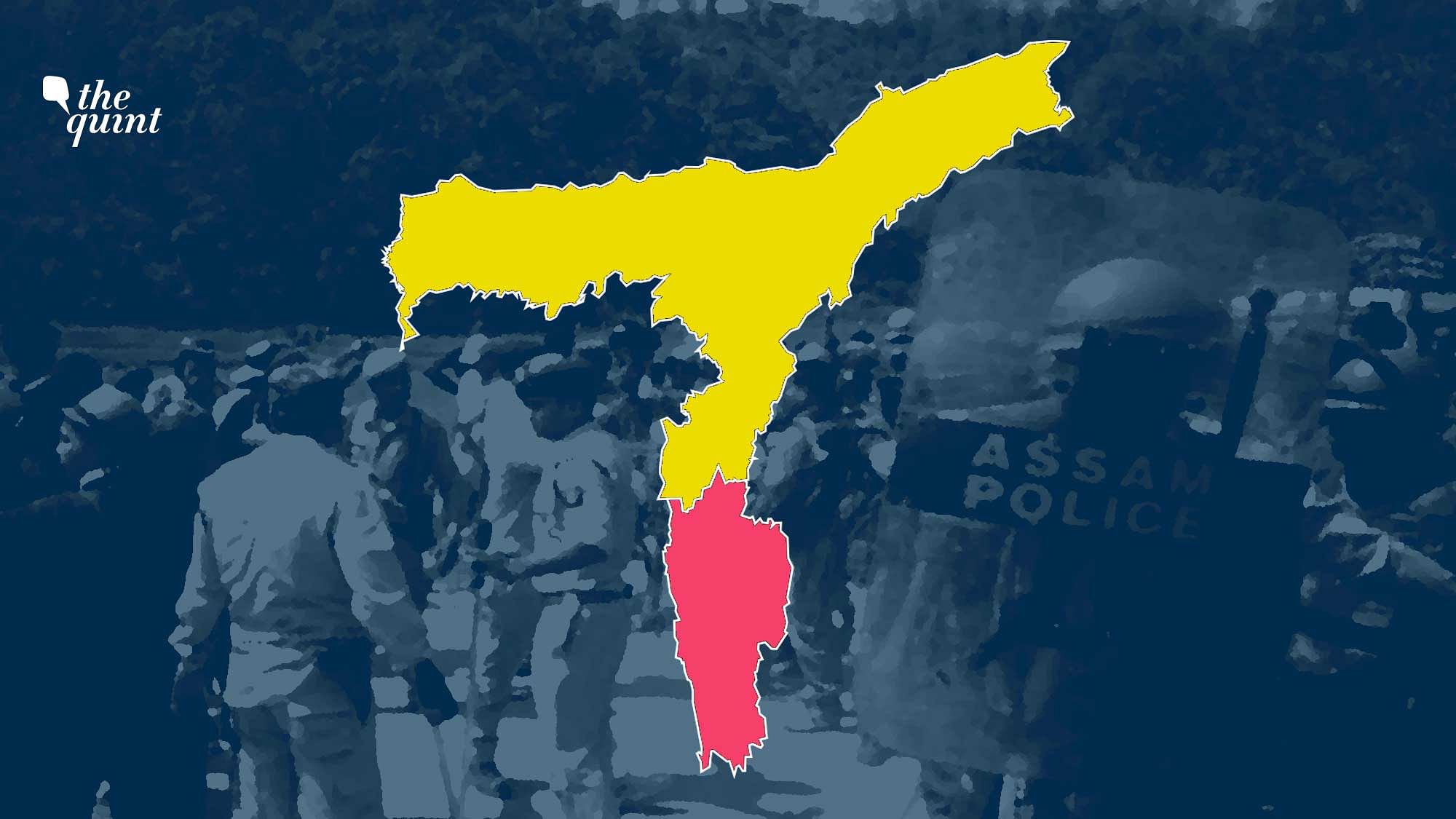
Now, if you all remember the Assam-Mizoram clash a few months back, where two state police forces and CMs were fighting. This exactly was the conflict point there. While Assam believes in the 1933 demarcation, Mizoram still stresses the 1875 demarcation. Mizoram cites that their views weren’t considered during the 1933 demarcation, while Assam clearly says that in 1875 Mizoram was a part of Assam only, so there is no point of conflict. But the conflict continued and frequent clashes kept on happening. But slowly, the militants were taken into confidence for discussion and violence reduced. Even, the current chief minister ZORAMTHANGA was himself a violent activist earlier but with time he too came on board of discussion. Today Mizoram has done great progress and is one of the top states in the country in development and literacy. But still, some issues remain, due to which we see clashes like these.
NAGALAND: The Land of the Deepest Insurgency
Nagaland is in news currently because of civilians being killed in firing by armed forces. As we go into the history of the state, we find one of the most serious cases of insurgencies that is present even today. Nagaland is a place with Christian culture and lifestyle and has almost no connect with mainland India. Due to this, there was negligible support by this region during India’s struggle for independence. Even in the Government of India Act 1935, Nagaland was kept in the ‘Excluded Areas’. With time, as it started getting clear that Britishers will be leaving India, Nagas too made a national front (Naga National Council) and started demanding an independent state. India also started having discussions with the moderate Naga leaders T Sakhrie and TN Angami. Finally, the discussions came out fruitful as on 29th of June, 1947 Nagaland formally became a part of India.
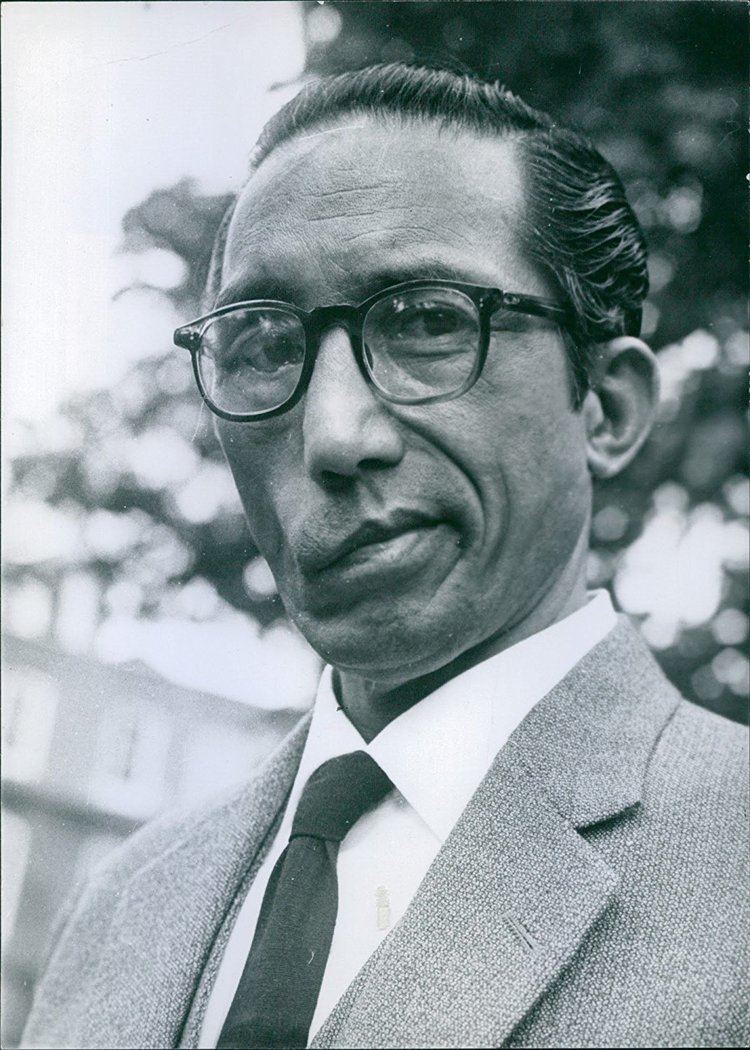
But, the story was not as simple as it seems. There was one extremist group as well led by Angami Zapo Phizo, who was completely against Nagaland’s merger with India. Here, Nehru was very firm on including Nagaland in India, despite Gandhiji being soft and in favour of bringing Nagaland only if it really wants to. The situation became grimmer when 99.9% of people in Nagaland voted in favour of having an independent state. Not just did they boycott the 1952 General elections, but PM Nehru had to face booing during his Nagaland visit. From here, the situation only got worse, not just did the Indian Army handle the situation too violently, but the extremists assassinated their moderate leader T. Sakhire. After this, Phizo fled the country and started using his underground army to run a parallel government formed by him (Federal Government of Nagaland). Now, due to this serious condition, the Indian government brought the Armed Forces Special Powers Act (AFSPA) into effect which gave too much power into the hands of armed forces. Nagaland became an Indian state in 1963.
Here, while Naga People’s Convention (NPC) started talking with the Indian government to establish peace, the Naga National Council (NNC) kept on with its violence. They even went to Mao Zedong’s China to receive training and arms against India. But, now NNC started getting divided from within due to different factions. Then PM Indira Gandhi used this opportunity to contact the NNC leaders and signed the Shillong Agreement in 1975. But, some extremists were still there in existence who after China, now went to Myanmar and demanded a separate Naga country. This definition included not just Nagaland, but also some parts of Arunachal Pradesh, Manipur and Assam. By straight logic, it was an illogical and foolish demand.

The National Socialist Council of Nagaland got split into two led by KHAPLANG and ISAK MUIVAH (NSCN-K and NSCN-IM). While the NSCN-IM has already signed a peace accord with the Indian government, NSCN-K broke the ceasefire in 2015 and since then Indian government has not held any talks with them. Even today, Nagaland CM Neiphiu Rio has been heard continuously saying that they want their own constitution and own flag. Because of so much disturbance, Nagaland is among the states with the highest unemployment in the country. Here, there have been constant complaints by locals and human rights organisations that the Indian Army has tortured civilians, raped women and arrested journalists in the area. So, we know why the situation is still grim in the region.
SIKKIM: India’s worst show ever
If I tell you, that India used force and mobilised opinion to gain an area, would you believe me? I guess no…but you will have to after reading this. Actually, Sikkim is quite different in culture, history and identity from the rest of the northeast. There was a monarchy headed by a CHOGYAL (a post for the king heading the monarchy). In the 18th century, the Gorkhas (Nepali warriors) had taken Sikkim under their control. Later, the British took over Nepal after their crushing victory in the Anglo-Nepali war (1814-16). It was followed by the Treaty of Sugaul (1817) under which Sikkim received some autonomy despite being under British jurisdiction.

Now, after Indian independence, Sikkim didn’t want to be a part of India as they considered themselves completely different from India. Finally, Sikkim was made a part of India under a ‘special status’ as per the ‘India and Sikkim Treaty (1950)’. Here, Sikkim had some autonomy and India had the power to station its military there. While Sardar Patel and B.N. Rao (constitutional advisor of the constituent assembly) were against the ‘special status’ idea, PM Nehru being an idealist was strictly against the use of any force. He also feared that this step may outrage China to conquer Tibet (which happened eventually anyway).
Slowly, Sikkim started changing its tone by demanding full autonomy as it was not pleased by the military presence in its region. The then king’s wife Queen Hope Cook had an American passport. She used it to gain international sympathy and highlight Sikkim’s demand for autonomy. The then PM Indira Gandhi was not at all happy with all this and nor was she an idealist like her father. She even accepted that her father did a mistake in granting special status to Sikkim and not taking it by force. She again brought her trusted man R.N. KAO (the man behind RAW) into the game. Kao along with his diplomatic team of GBS Sidhu and P.N. Banerjee started financially and logistically helping Kazi Ihendup Dorjee, the opposition leader of Sikkim. Dorjee lead pro-democracy protests in the region leading to complete chaos. Chogyal had no option but to ask India for help in restoring law and order in the region. India used this opportunity to make Sikkim sign an agreement.

After this, formal elections took place in the region and Dorjee became the first CM of Sikkim, but the Chogyal monarchy still continued. But, this happiness of monarchy was short-lived as the Indian military organised a coup, brought the monarchy to an end and put the Chogyal into house arrest on 9th April 1975. Not just this, a book named ‘Smash and Grab: Annexation of Sikkim’ by Sunanda K Datta-Ray was banned and so was the documentary ‘Sikkim’ made by legendary Satyajit Ray. It was done so that the opinion doesn’t get mobilised in favour of Sikkim. Here, it should also be known that by this time the local Sikkim population had become a minority as a huge number of labourers were brought from Darjeeling here during the British rule. In 1975, the referendum showed 60000 in favour of Sikkim joining India against just some 1500. But, even then as I said above it will go down as India’s WORST show ever in expanding control and crushing opinion. And…no surprises why we don’t study about it in our history.
Conclusion: Don’t let them fall apart
So, we were able to see that there is so much knowledge and so many stories laden in the valley of the northeast, but only if we dig deeper. Other than the Olympics and Elections, do we ever even talk about the northeast. It is also a part of India and should be kept like one. Also, when we study about it, we again get to see that India is a diverse collection of different cultures and lifestyles. Also, at the same time, we see some ‘politically incorrect’ examples where India had to use force and tactics to get the region under the control. But, we should not be ashamed of that episode. If we are true Indians, we should be open and acceptable of our past, whatever be it.

Also, while we see our transition in the northeast area amidst all the insurgencies, there is no doubt that we have made a lot of progress. Although all the governments have done a decent job in this area, the BJP government deserves a standout and a special mention. It has done a really nice job in bringing the insurgents to the discussion table leaving their weapons. Whether it is the BODO agreement or the Naga Peace Accord, there has been appreciable work. Some issues related to border conflicts and AFSPA remain, and they should be resolved properly with discussion and maturity. Finally, I would wish the government all the best and advise you all to celebrate INDIA’s North East.

